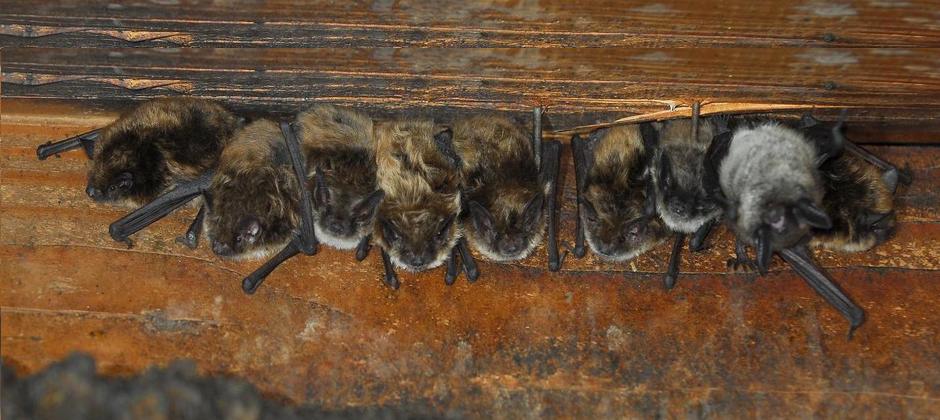Share this article
Attics may be sanctuaries from white-nose syndrome for bats
Attics don’t just provide a place to stash old record collections and keepsakes. In Yellowstone National Park, they provide the perfect place for female bats to weather cold summers, and they may help protect them from deadly white-nose syndrome.
“Buildings are allowing females to live in an environment where they wouldn’t otherwise have been,” said Joseph Johnson, and assistant professor of biology at Ohio University and the lead author of a study published recently in Ecosphere.
Little brown bats (Myotis lucifugus) are highly susceptible to white-nose syndrome, a fungal disease that has wiped out populations of the flying mammals across North America. The loss has been so great that in some areas big brown bats are taking over their ecological food niches.
The disease attacks hibernating bats in their winter slumber, eroding their skin and causing them to use more energy to keep warm, which can eventually lead to starvation. Previous research found WNS is one of several major threats for bats in national parks, and while the disease hasn’t been documented yet in Yellowstone, researchers were worried that the high elevation of the park might make bat populations there particularly vulnerable to the disease due to the cold.
Researchers wanted to get a better understanding of the places bats were roosting in the park. They used temperature-sensitive radio transmitters to determine roost preference in rocks, trees and buildings, and tested the microclimate of these areas.
They found a great difference between female and male bats. While males only used rock crevices or trees, females roosted in building attics 84% of all possible days. Climate testing suggested that the females may be choosing the buildings due to their average temperatures, which were warmer in the middle of the maternity season.
“Those buildings are a lot more thermally stable, especially during the critical period of lactation,” Johnson said, adding that female bats have a very short period to gestate, nurse their young and then recover from the effort by putting on enough fat for hibernation. “The warmer the roosts can be, the less energy needs to be taken away for development or thermal regulation.”
Johnson said that these structures are important for conservation because they probably allow female little brown bats to persist in areas that previous research suggested was only possibly suitable for males, especially when white-nose syndrome is present.
“Buildings represent a really critical resource when it comes to a thermally challenging environment,” he said. “By allowing bats to roost in those structures, we’re giving these populations their best chance to reproduce.”
Giving bats a warm place to raise their young and stay in good condition may also better prepare them for the winters when white-nose syndrome strikes.
It’s important to think about buildings and attics in new ways given the challenges presented by white-nose syndrome, Johnson said. Bats in buildings shouldn’t just be seen in terms of human-wildlife conflict.
“If they are thriving in buildings, it’s an opportunity for conservation,” he said.
Header Image: Pregnant little brown bats huddle together in maternity colonies to conserve warmth, as they are unable to regulate their body temperature. ©Courtesy of National Parks Service








